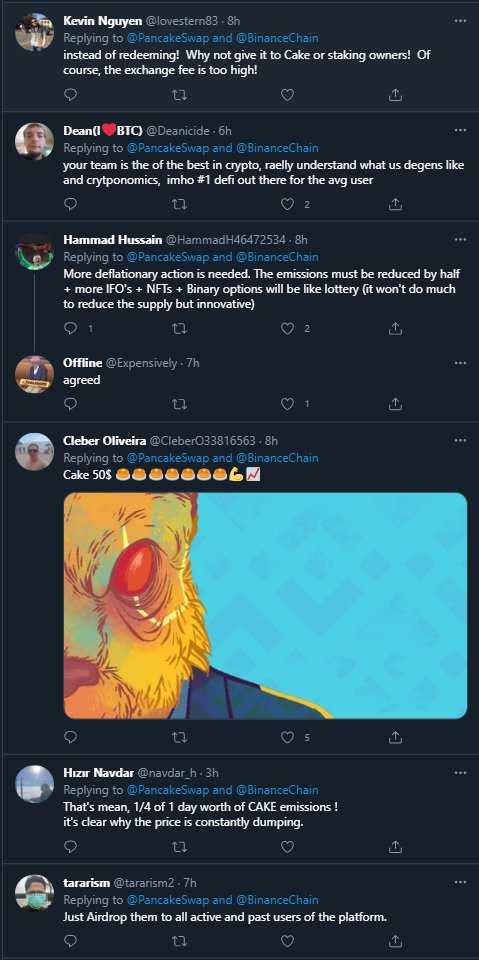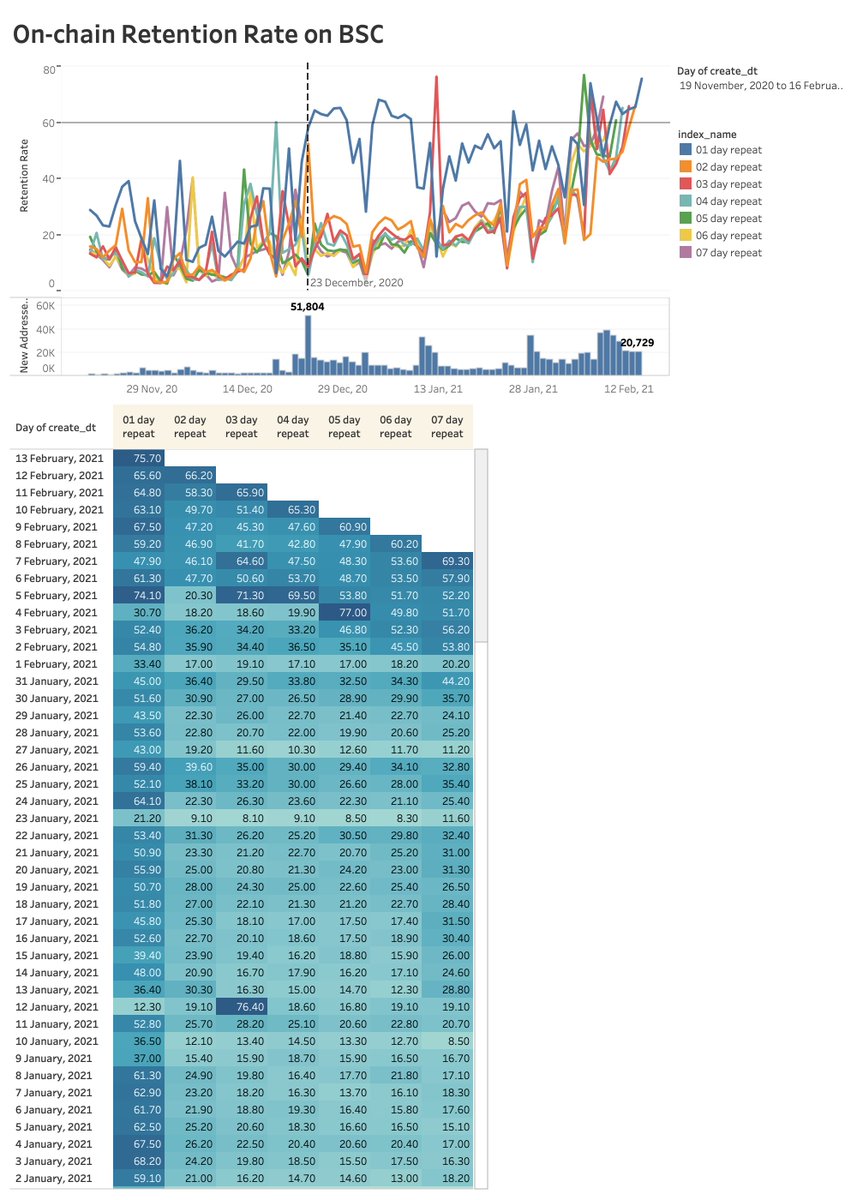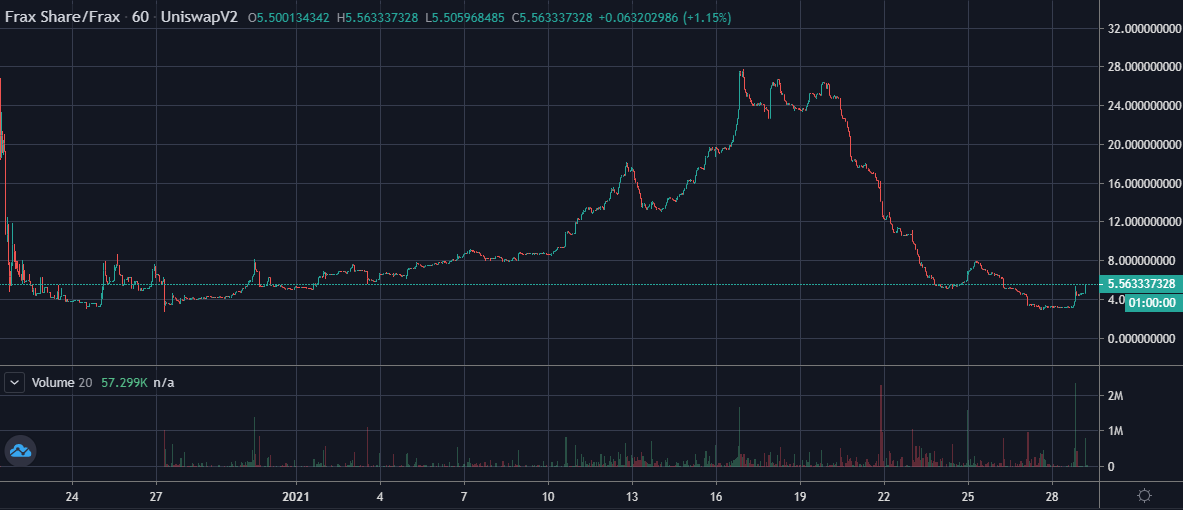
1/ There has been a lot of accusations regarding fake activity towards Binance Smart Chain (BSC) the past few weeks, but little evidence
We actually researched BSC user & economic activity and compared to other DEXs - here's what we found
Thread 👇
We actually researched BSC user & economic activity and compared to other DEXs - here's what we found
Thread 👇
2/ The most commonly cited questionable activity we saw was that of unique addresses
The sudden uptick in unique addresses was mostly attributed to CHI tokens being minted. When BSCscan changed their algo to exclude addresses generated by the CHI contract, slope normalized
The sudden uptick in unique addresses was mostly attributed to CHI tokens being minted. When BSCscan changed their algo to exclude addresses generated by the CHI contract, slope normalized

3/ @calchulus breaks it down in this thread in more detail in this thread
https://twitter.com/calchulus/status/1368637485861937158
4/ The skepticism towards BSC is partially due to high volumes and TVL of @PancakeSwap (PCS) seemingly coming from nowhere combined w/ Asian exchanges having a reputation of wash trading
This rapid growth can however be pretty easily explained by digging into AMM dynamics
This rapid growth can however be pretty easily explained by digging into AMM dynamics

5/ First, understand that wash trading on DEXs is ALOT harder than wash trading on CEXs
Even though BSC is not censorship resistant, tx data is still open and verifiable unlike tx data on CEXs which can easily be faked
Even though BSC is not censorship resistant, tx data is still open and verifiable unlike tx data on CEXs which can easily be faked
6/ This means that in order to wash trade, Binance would need to actually pay fees instead of rebating or waiving them as some CEXs do
At $1B/day volume & 20bp fee, that's $2m - $730M annualized
At $1B/day volume & 20bp fee, that's $2m - $730M annualized
7/Let's assume that b/c Binance has deep enough pockets, that we cannot stop here
Typically, when identifying exchanges for fake volumes, we compare liquidity profiles to volumes
The exchanges w/ low liquidity relative to volumes raise alarm bells
Typically, when identifying exchanges for fake volumes, we compare liquidity profiles to volumes
The exchanges w/ low liquidity relative to volumes raise alarm bells
8/ For CEXs, there are many ways to measure liquidity, the best being to test slippage on market orders
@ArtPlaie did a great analysis on this in 2018
sylvain-ribes.medium.com/chasing-fake-v…
@ArtPlaie did a great analysis on this in 2018
sylvain-ribes.medium.com/chasing-fake-v…
9/ For AMM DEXs, it's actually a lot more straightforward.
TVL is a direct, easily quantifiable representation of liquidity
Undeniably, there is real liquidity
As expected, as TVL increased, so did volume
Liquidity begets volume which begets liquidity

TVL is a direct, easily quantifiable representation of liquidity
Undeniably, there is real liquidity
As expected, as TVL increased, so did volume
Liquidity begets volume which begets liquidity


10/ Now let's introduce a concept called DEX AMM velocity (ratio of Tx volume vs TVL) which tracks the speed of turnover of AMM capital
Higher velocity means that capital is being turned over faster (higher flow). Flow can be segmented to:
- non-arbitrage flow
- arbitrage flow
Higher velocity means that capital is being turned over faster (higher flow). Flow can be segmented to:
- non-arbitrage flow
- arbitrage flow

11/ Non-arbitrage flow is essentially trading activity from real users (but can also be from bots doing non-arb trading)
Uniswap obviously has a lot of this, being the go-to site for most traders
But a look at @DappRadar tells us that Pancakeswap has had comparable 24hr users
Uniswap obviously has a lot of this, being the go-to site for most traders
But a look at @DappRadar tells us that Pancakeswap has had comparable 24hr users

12/ In comparison, none of the other DEXs actually come close to Uni or PCS, indicating they see a relatively high amount of non-arb flow
Only PCS + Bancor see growing users
Even though Sushiswap has high TVL and volumes, this is only across a steady 2,000-3,000 daily users
Only PCS + Bancor see growing users
Even though Sushiswap has high TVL and volumes, this is only across a steady 2,000-3,000 daily users

13/ Comparing volume to users:
- Volume/User is increasing across the board reflecting higher asset prices
- Curve sees mostly large tx trades
- Sushi+Balancer have high volume/user indicating skew towards larger traders+arb flow
- Uni+PCS indicate skew towards retail
- Volume/User is increasing across the board reflecting higher asset prices
- Curve sees mostly large tx trades
- Sushi+Balancer have high volume/user indicating skew towards larger traders+arb flow
- Uni+PCS indicate skew towards retail

14/ The important nuance here is that a low volume/user ratio does not necessarily indicate low arb flow
Arb flow for UNI + CAKE is high because they have high TVLs + low gas costs
Deeper liquidity & cheaper costs both contribute to larger arb opportunities
Arb flow for UNI + CAKE is high because they have high TVLs + low gas costs
Deeper liquidity & cheaper costs both contribute to larger arb opportunities
15/ Given that a tx on Pancakeswap on BSC is 100x cheaper than a tx on Uniswap (and PCS tx fee is 20 bps vs 30bps), you would expect significantly more arbitrage opportunity as well
16/ To understand this, imagine a scenario where ETH on CEX moves up 35 bps and then down 35 bps.
Because of CEX/DEX Tx Fees + gas costs + slippage, an arb bot would not hit Uniswap b/c total cost >35bp
But arbing against PCS might cost 25 bp so trades are made on both moves
Because of CEX/DEX Tx Fees + gas costs + slippage, an arb bot would not hit Uniswap b/c total cost >35bp
But arbing against PCS might cost 25 bp so trades are made on both moves
17/ Put shortly, DEXs with lower execution fees are able to harvest volatility at higher frequencies than other DEXs
18/ To triangulate our findings, we crawled social channels (twitter, telegram, etc) of various BSC channels
This is qualitative, so no pretty charts, but the amount of engagement is very real - an actual degree of magnitude higher than ETH Projects (but also very RETAIL)

This is qualitative, so no pretty charts, but the amount of engagement is very real - an actual degree of magnitude higher than ETH Projects (but also very RETAIL)


19/ This makes sense given Binance's massive userbase and their inability to afford high cost ETH DeFi environments
Data analysis on retention rates, activity at a project level, and Btoken growth doesn't show much out of the ordinary
H/T @howard_pen3


Data analysis on retention rates, activity at a project level, and Btoken growth doesn't show much out of the ordinary
H/T @howard_pen3



20/ Overall, our findings did not find much evidence to substantiate the narrative of largely fake activity + bots
Rather, it points to real fast growing activity from a largely newer less sophisticated retail audience combined with variable project quality (skews lower)
Rather, it points to real fast growing activity from a largely newer less sophisticated retail audience combined with variable project quality (skews lower)
H/T @wvaeu @Daryllautk data cuts
• • •
Missing some Tweet in this thread? You can try to
force a refresh




